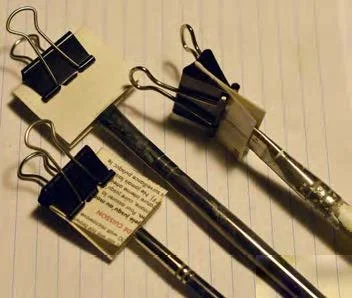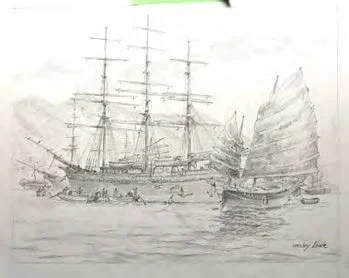Wesley Lowe
-

Creative Methods of Brush Care and Repurposing Spoiled Brushes
Some of my brushes are well past the useful stage, worn down, and stiff with hardened paint. I didn’t look after them as I should have. So, by mashing the hairs a bit and maybe cutting some of them off, I have created a unique and valuable tool that can be shaped in any manner you like. These new tools are excellent for simulating foliage, adding texture to water, or other subjects. I will occasionally use them in my studio and bring one or two along for plein air work.
Over time, my flat brushes tend to lose their original shape and crispness. To regain their original form, I put a little linseed oil on the bristles, then using a folded piece of card and paper clamp, I insert the brush’s hair, fold over the card, and apply the clamp Leave it clamped to the top of the bristle part until I next want to use the brush. Just wash out the linseed oil, and the brushes are ready.
-

Sketching, Adding Detail, and How They Influence the Ongoing Painting Process
When deciding on a subject to paint, I always work out the composition by spending that extra time on detailed pencil studies to create a concise idea of where I’m going before beginning the painting. It’s not foolproof, but it can solve many issues that can crop up in the final painting and spoil an otherwise great time at the easel by repainting and correcting.
I wouldn’t say I like to leave areas in my painting that are poorly rendered for too long, as they usually create an ordeal and tend to mess with my judgment of the other regions.
